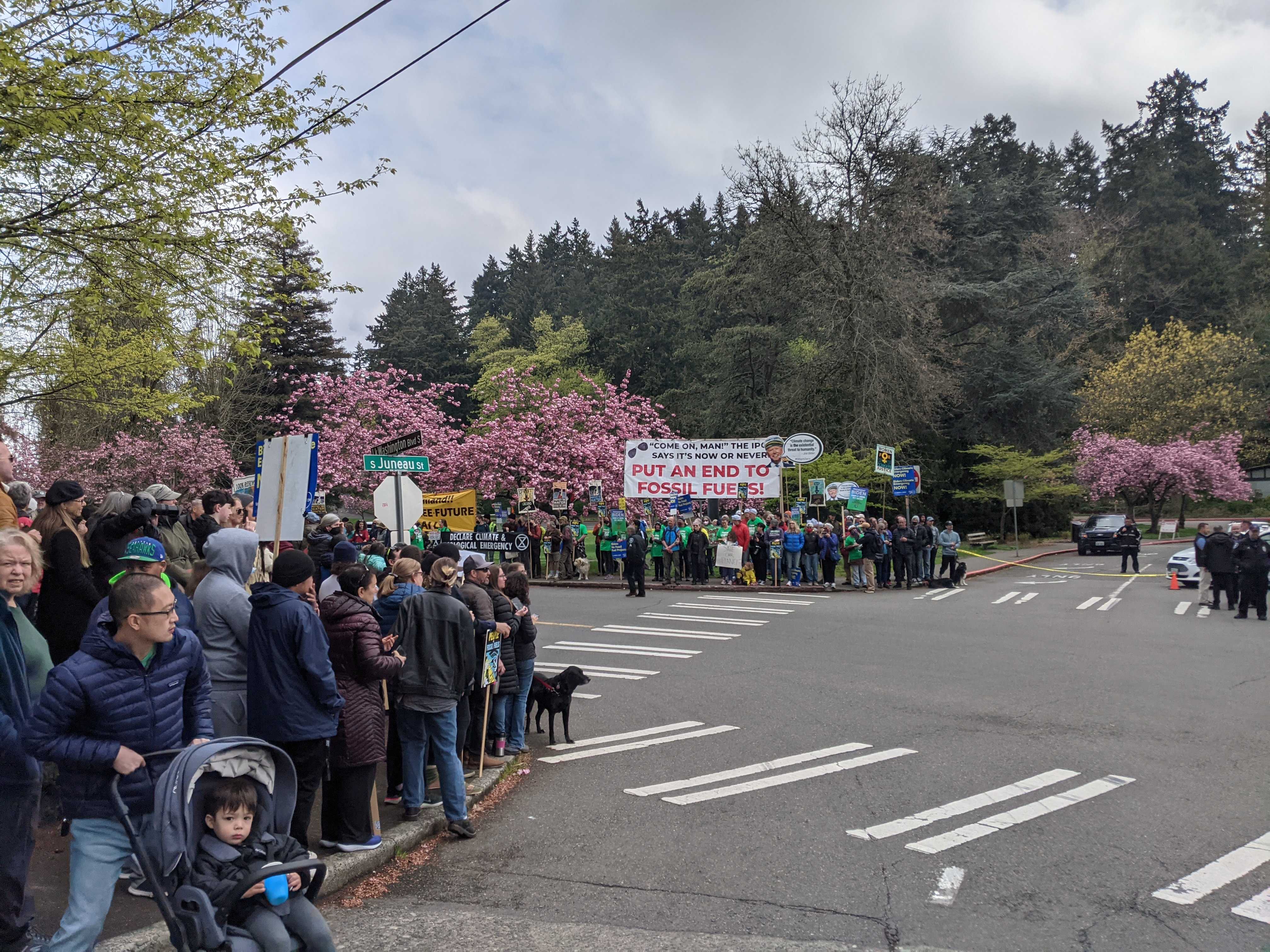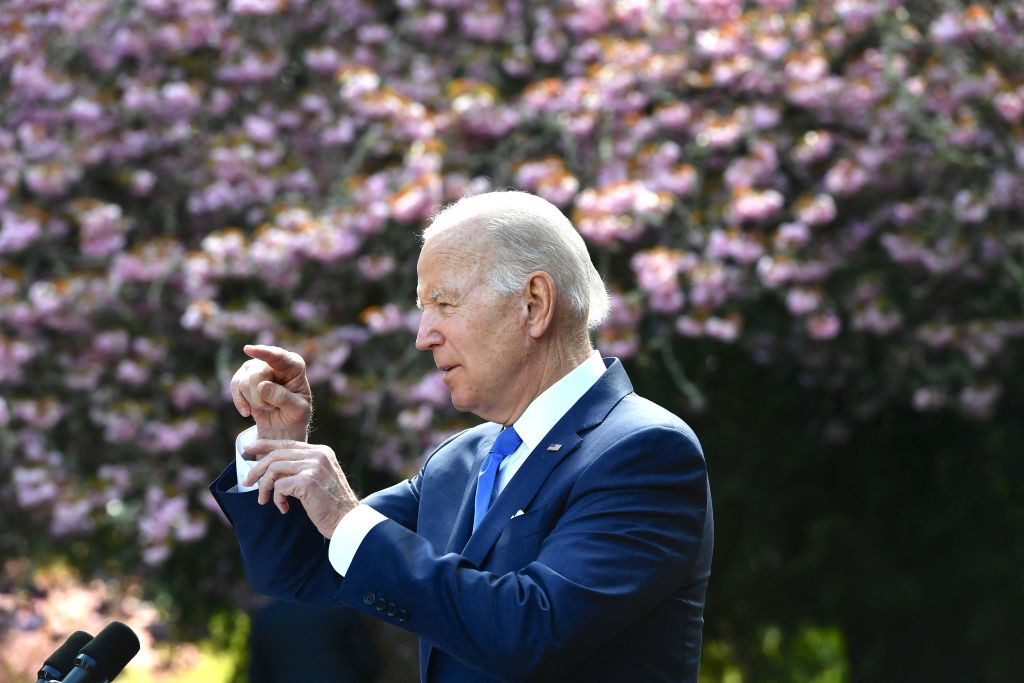America’s majestic trees — Douglas firs in the Pacific Northwest, sequoias and redwoods in California, longleaf pines in the South — can live for hundreds of years, protecting nearby water systems, holding topsoil together, and filtering air pollution. They also act as a carbon bank, extracting carbon dioxide from the air and storing it, which makes them an important resource for tackling the climate crisis.
In recognition of Earth Day on Friday, President Joe Biden took a step toward protecting these trees, signing an executive order directing the Department of Interior and the Department of Agriculture to create an inventory of mature and old-growth forests on federal lands. Biden’s order requires the agencies to use the findings from the inventory to craft policies that protect old-growth forests from a number of threats, including wildfires and other risks exacerbated by climate change.
The order also recognizes the crucial role that forests play in rural economies. While sparse on details, the White House’s writeup noted that federal agencies will work with local governments, nonprofits, labor unions, and the scientific community to “create and sustain jobs in outdoor recreation and in sustainable wood, paper, and other forest products.”
Many environmental groups applauded the White House’s efforts to protect forests and recognized it as a meaningful form of climate action.
“Conserving and protecting our remaining old and mature growth trees and forests has been the missing link of U.S. climate policy for decades,” said Kirin Kennedy, a director at the Sierra Club, in a press release. “We are encouraged by President Biden’s leadership today in the hopes forests can be part of the climate solution.”
In recent decades, old-growth forests have faced a number of threats. Increasingly hot and frequent wildfires have burned old trees to a crisp. Warming temperatures are fueling the outbreak of invasive bark beetles in new territories. And timber companies have continued to fell old trees.
Biden’s executive order requires federal agencies to address the various ways in which climate change is decimating old-growth forests and calls for “climate-smart management.” But it’s unclear how the order might affect logging, particularly on federal lands. The order requires federal agencies “to advance forest-related economic opportunities” while “supporting healthy, sustainably managed forests in timber communities.”
Some environmentalists responding to the order called on the administration to ban logging. “There’s no carbon-capture technology better than older forests and trees,” said Randi Spivak, the public lands director with the Center for Biological Diversity, in a press release. “For the sake of our climate and nature, it’s time to stop logging these carbon-storing champions on federal forests now.”
Earthjustice president Abigail Dillen called on the administration to promptly release “a simple rule to safeguard federal forests nationwide from logging and other threats as a central pillar of our national climate strategy.” (Earthjustice and the Center for Biological Diversity are advertisers with Grist; advertisers have no role in Grist’s editorial decisions.)
Biden revealed the order during an Earth Day address at Seward Park in Seattle, Washington. Several hundred people gathered outside the park, including protesters with the environmental nonprofit Food and Water Watch and Build Back Fossil Free, a coalition that has been pushing Biden to declare a climate emergency and end fossil fuel development. As Biden’s motorcade passed by, activists stood with a 15-foot banner that read “C’mon man, the IPCC says it’s now or never: put an end to fossil fuels!” In a press release, Thomas Meyer, an organizer with Food and Water Watch, said that “President Biden can’t claim to be a climate leader just a week after his administration opened up more of our federal lands for fracking and drilling.”

The executive order also takes a number of steps to protect old-growth forests internationally. It notes that the State Department will produce a report on ways for the U.S. to avoid purchasing commodities such as beef, soy, and palm grown on illegally or recently deforested lands. The agency will also assess ways to deploy foreign aid and international partnerships to prevent deforestation.
Finally, the order recognizes the important role that “nature-based solutions” can play in addressing climate change. Nature-based solutions refer to a vast array of ways to restore ecosystems such that they adapt to a warming climate while better protecting humans and wildlife. Restoring marshes and swamps to absorb the effects of rising sea levels and storm surges is one example, as is prescribed burning.
The executive order requires the White House science and environmental offices to develop a report on how to better use nature-based solutions, including “everything from restoring marshes, to planting shade trees, to promoting drought-resistant crops.” The order also requires the Office of Management and Budget to develop methods for assessing the economic value of services provided by ecosystems. The order referenced the value of pollinators in agriculture and forests cleaning up air and water as examples of such services.
Daniel Penner contributed reporting to this article.



